Data privacy has always been important — but it’s even more important now. Recent online data privacy concerns and Google’s phase-out of third-party cookies are all a response to a growing consumer focus on more ethical and transparent data collection practices. What these changes highlight is the importance of zero-party data (the collection of it as well as the ethical usage of it) in helping brands gain more accurate and valuable insights about their target audience.
Zero-party data is immensely valuable for email marketing, particularly amidst the death of third-party cookies and the growing consumer demand for hyper-personalization.
Need more help creating a zero-party data strategy for your email marketing initiatives?
What is zero-party data?
Zero-party data is information that a customer intentionally and willingly shares with a brand. This type of data is collected directly from customers through interactions such as surveys, quizzes, preference centers, and personalized shopping experiences. Unlike first-party data, which is gathered through customer behavior and interactions with a brand’s website or app, zero-party data is explicitly provided by the customer, ensuring its accuracy and relevance.
Here are some key characteristics of zero-party data:
- Voluntarily Shared: Customers willingly provide zero-party data, often in exchange for a more personalized experience. This creates a level of trust and transparency between the customer and the brand.
- Highly Accurate: Since customers are the source of zero-party data, it tends to be more precise and reliable compared to inferred data from other sources.
- Directly Collected: Zero-party data is obtained straight from the customer, eliminating the need for guesswork or assumptions about their preferences and needs.
- Privacy-Friendly: With increasing concerns about data privacy and regulations like GDPR and CCPA, zero-party data stands out because it is collected with the customer’s explicit consent, making it a privacy-compliant way to gather information.
Here are some examples of zero-party data:
- Preference Centers: Where customers specify their interests, preferred communication channels, and product preferences.
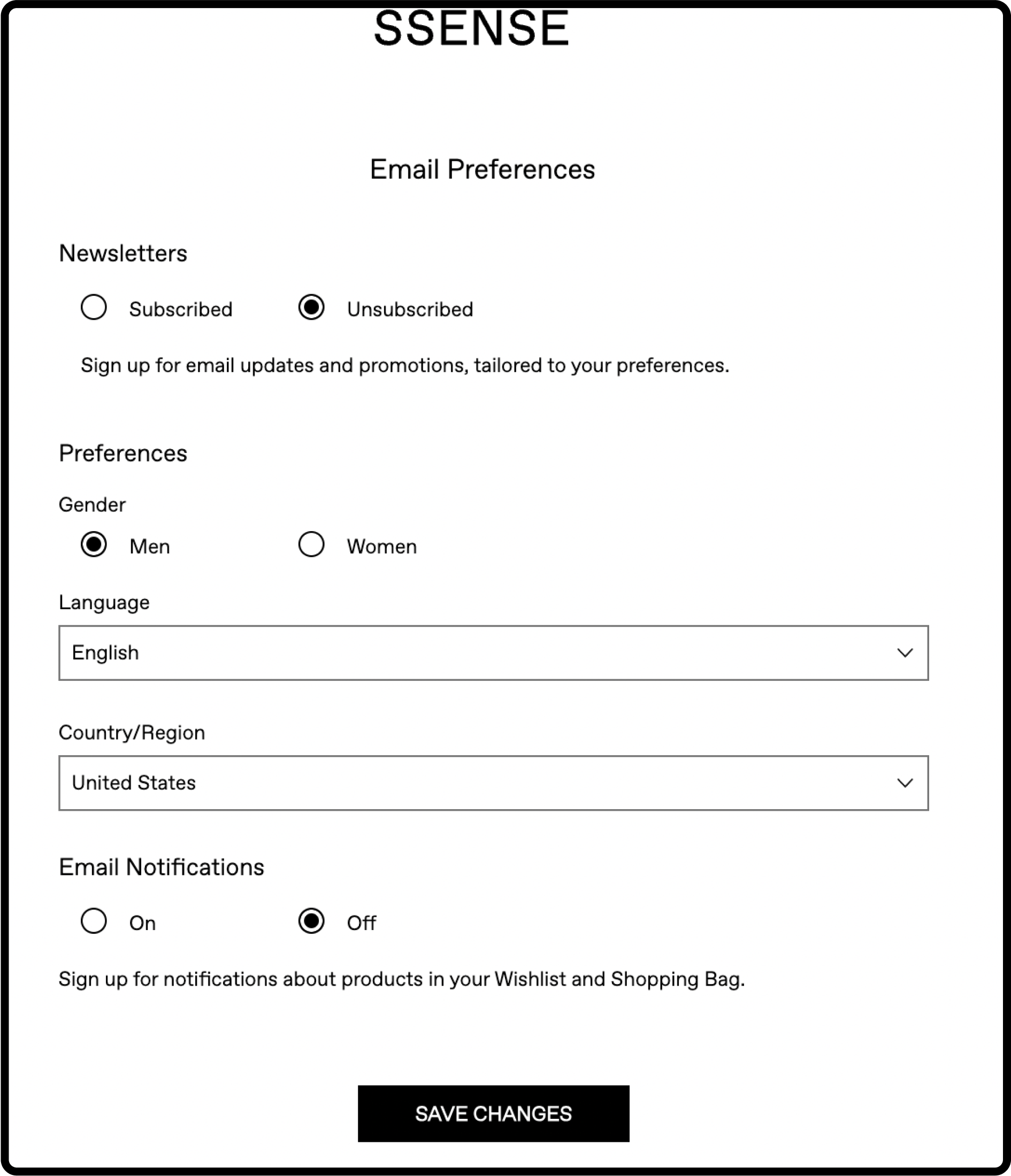
- Surveys and Quizzes: Tools that engage customers and collect insights on their preferences, habits, and needs.
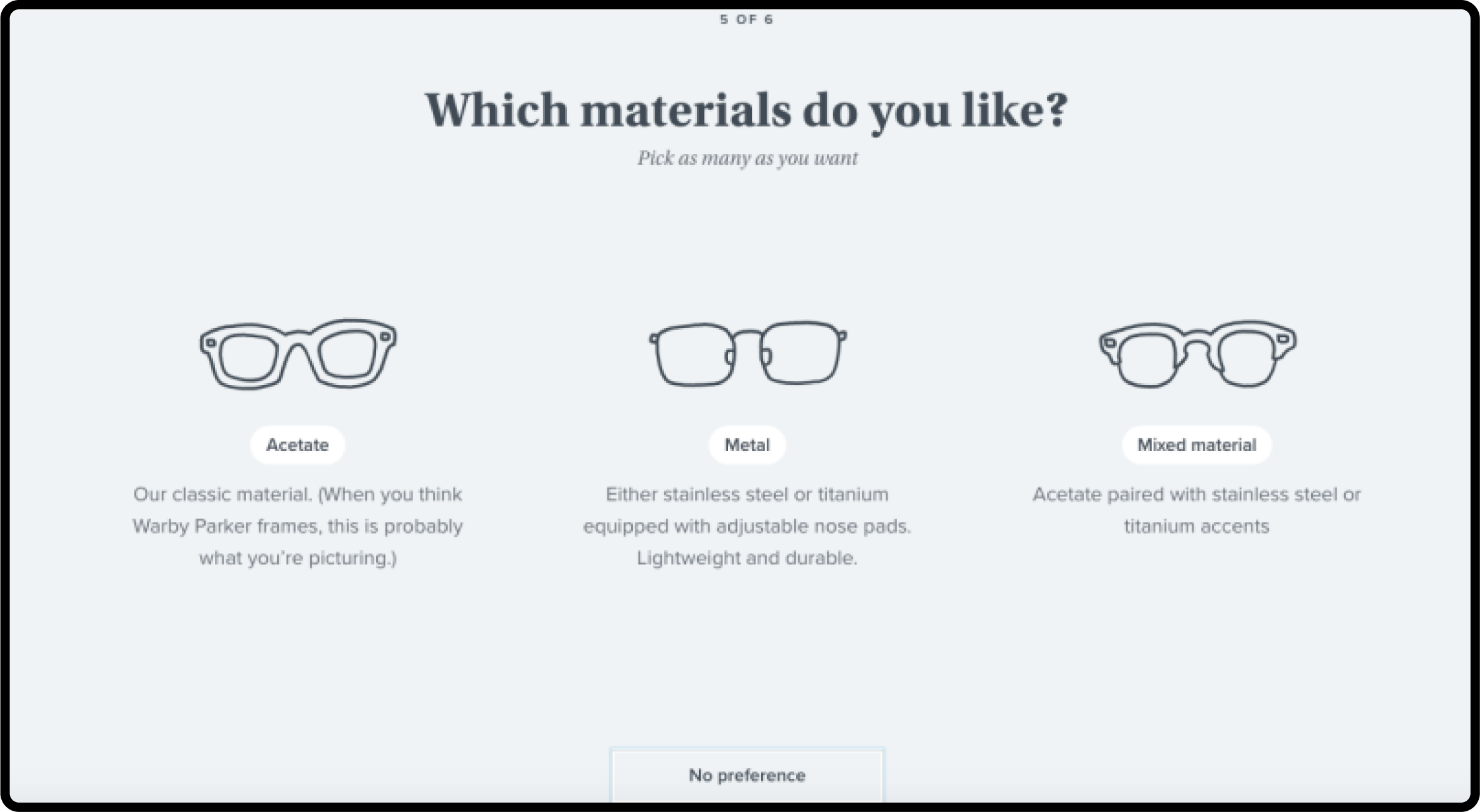
- Personalized Account Settings: Features that allow customers to customize their experiences, such as wishlists, saved items, and preferred shopping categories.
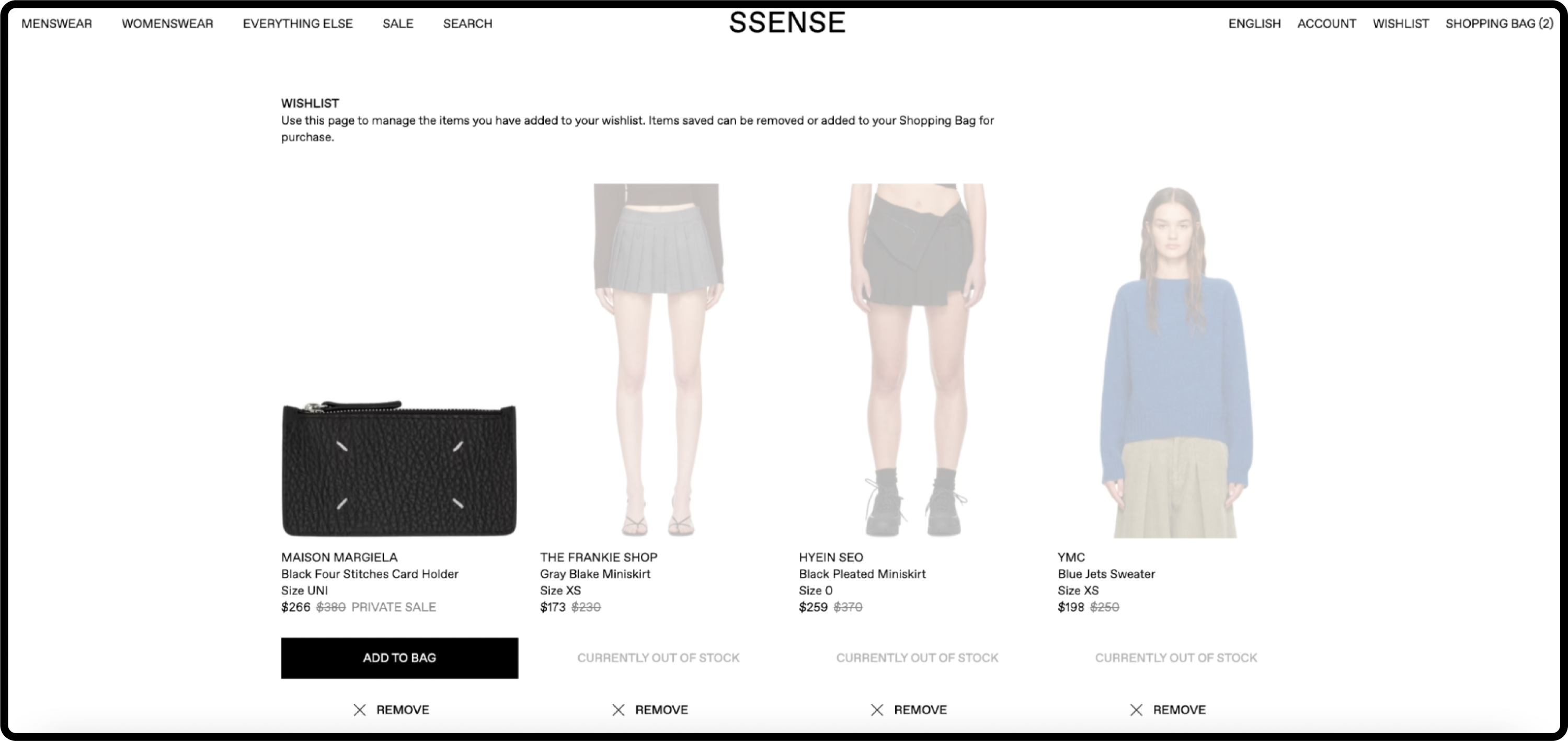
The difference between zero-party, first-party, second-party, and third-party data
Zero-party data is information that customers intentionally share with a brand. Since customers provide this data willingly, often in exchange for a more personalized experience, it is highly accurate and relevant.
First-party data is information that a company collects directly from its own customers through their interactions with the brand’s digital properties, such as websites, mobile apps, and social media. This data is directly collected from customer interactions with the brand, making it accurate and reliable as it reflects real customer behaviors and preferences. The brand owns this data, giving it full control over its use. An example of first-party data is website analytics that show which products a customer views most often or purchase history from an online store.
Second-party data is essentially someone else’s first-party data that is shared with another organization. This data is obtained through a partnership or agreement between two companies, ensuring it comes from a known and reliable source. Second-party data maintains the accuracy and relevance of first-party data and is shared based on mutual agreements, often enhancing its utility without compromising privacy. For instance, a car rental company might share its customer travel preferences with a hotel chain to offer tailored travel packages.
Third-party data is information collected by an entity that does not have a direct relationship with the customer. This data is typically aggregated from various sources and sold to companies for advertising and marketing purposes. Third-party data offers broad reach, providing insights on a wide range of customers, but it may lack precision and relevance compared to data obtained directly from customers. Additionally, third-party data is increasingly scrutinized due to privacy regulations and consumer concerns. An example of third-party data is information collected from various websites and sold to an advertising network to target ads based on user behavior across the internet.
Comparing these types of data, zero-party and first-party data are generally more accurate and relevant since they come directly from customer interactions or preferences. Second-party data can also be reliable, depending on the quality of the partnership, while third-party data, although broad, may lack precision.
In terms of ownership and control, zero-party and first-party data are fully owned and controlled by the brand, allowing for better data governance. Second-party data involves shared control, whereas third-party data is typically owned by external aggregators.
Regarding privacy and trust, zero-party data excels as it is shared voluntarily by customers, and first-party data is also trusted as it is collected directly by the brand. Second-party data maintains trust if partnerships are transparent, but third-party data faces the most privacy challenges and trust issues due to its aggregated nature and lack of direct customer consent.
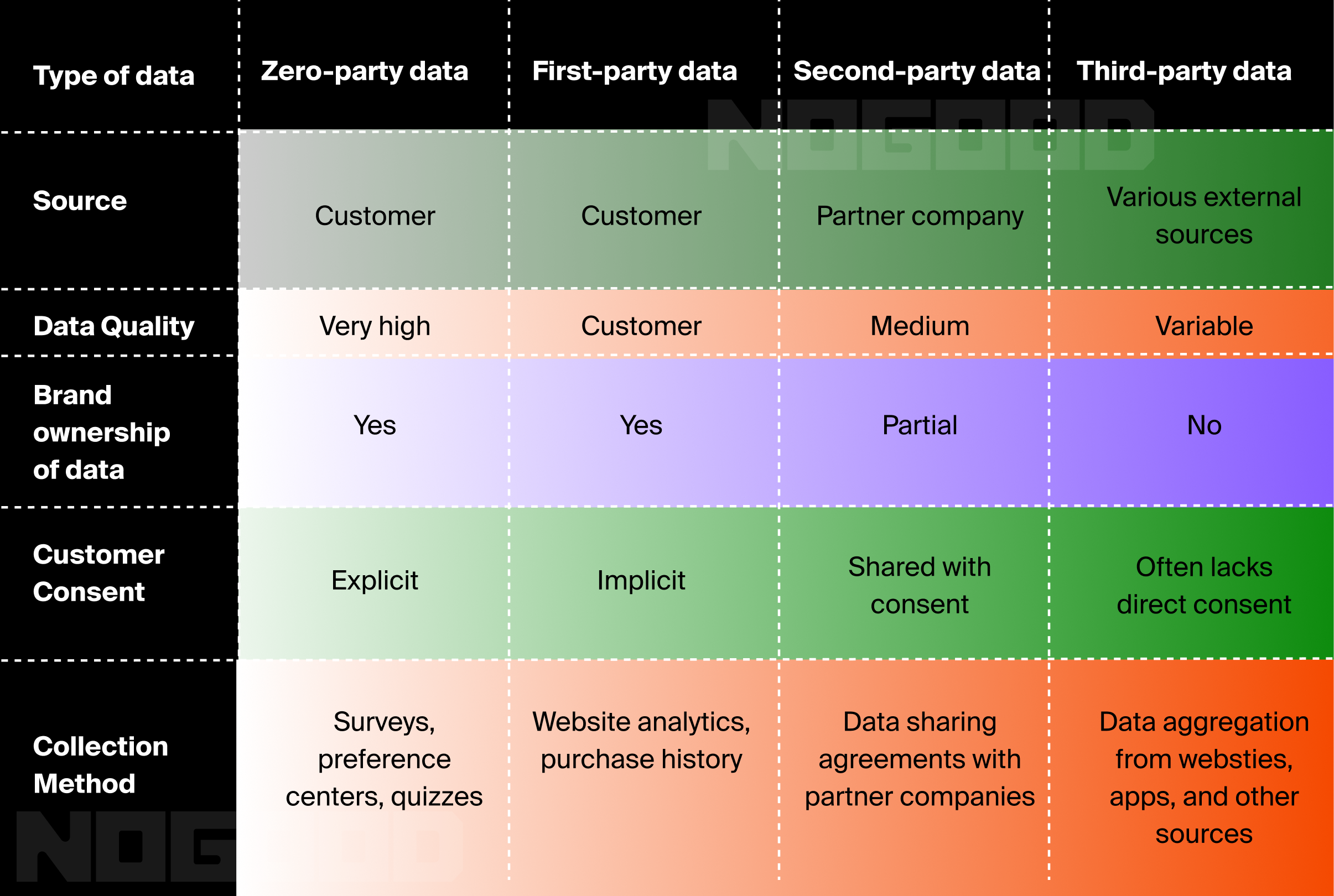
Why is zero-party data important for email marketing?
Zero-party data is particularly important for email marketing because it serves as the prerequisite and enabler of highly personalized and impactful email campaigns. While consumers are typically (reasonably) protective of their personal data, they are willing to share their data in exchange for an improved experience that caters to their wants and needs.
Zero-party data is the perfect way to strike that balance because it allows customers to be in control of what information they choose to share in order to get that personalized brand experience they’re looking for.
Here are just a few of the key benefits of using zero-party data for email marketing.
1. Enhanced personalization and engagement
With zero-party data, marketers can tailor their email content to meet the specific preferences and needs of their audience. This level of personalization goes beyond simply addressing the recipient by name; it involves crafting messages that resonate with their interests, preferences, and stages in the customer journey. Emails that are relevant and personalized based on zero-party data are more likely to be opened, read, and acted upon.
Customers appreciate when brands take the time to understand their preferences, leading to higher engagement rates and, ultimately, better conversion rates.
2. Compliance with privacy regulations
In an era where data privacy is becoming increasingly important, zero-party data provides a compliant way to gather customer information. Since this data is voluntarily provided by the customer, it aligns with privacy regulations such as GDPR and CCPA, reducing the risk of legal issues associated with data collection.
3. Improved data accuracy and strategic insights
Zero-party data is highly accurate because it comes directly from the customer. Unlike first, second or third-party data, which can sometimes be inaccurate or outdated, zero-party data reflects the customer’s current preferences and intentions, ensuring that your email marketing efforts are based on reliable information.
The insights gained from zero-party data can also inform broader marketing strategies. Understanding customer preferences and intentions can guide product development, content creation, and overall marketing messaging, ensuring that all aspects of your marketing strategy are aligned with customer expectations.
How to collect zero-party data
Unlike other data types, zero-party data is willingly provided by customers, making it highly accurate and valuable. Here’s a guide on how to effectively collect zero-party data:
1. Surveys and Questionnaires
Surveys and questionnaires are straightforward tools for gathering zero-party data. By asking customers specific questions about their preferences, interests, and intentions, you can gain valuable insights.
- Incentivize participation: Offer discounts, freebies, or entry into a giveaway to encourage customers to complete surveys.
- Keep it short and simple: Long surveys can be off-putting. Focus on asking essential questions that provide meaningful insights.
- Personalize the approach: Tailor the survey questions based on previous interactions to make them relevant and engaging.
2. Preference Centers
A preference center allows customers to choose what kind of communications they want to receive and how frequently. This self-service option empowers customers to share their preferences willingly.
- Make it accessible: Ensure that the preference center is easy to find on your website or in email communications.
- Offer multiple options: Provide a variety of preferences, such as product interests, content types, and communication frequency.
- Regular updates: Prompt customers periodically to update their preferences to keep the data current.
3. Interactive Content
Interactive content like quizzes, polls, and assessments can be engaging ways to collect zero-party data. These formats are not only fun for the user but also provide insightful data for marketers.
- Design engaging content: Ensure that the interactive content is entertaining and relevant to your audience.
- Clear value proposition: Explain what the user will gain from participating, such as personalized recommendations or insights.
- Follow-up: Use the results from interactive content to follow up with personalized email campaigns or product suggestions.
4. Contests and Giveaways
Running contests and giveaways can be an effective way to collect zero-party data. Participants are often willing to share their information for a chance to win a prize.
- Set clear rules: Make sure the terms of participation are transparent and easy to understand.
- Collect relevant data: Focus on collecting data that will provide insights into customer preferences and behaviors.
- Thank participants: Show appreciation by sending a thank you email and possibly offering a small reward to all participants.
5. Onboarding Processes
The onboarding process is a critical time for collecting zero-party data. When customers sign up for your service or newsletter, use this opportunity to gather relevant information.
- Step-by-step process: Break down the data collection into manageable steps to avoid overwhelming new customers.
- Explain the benefits: Let customers know how sharing their information will enhance their experience.
- Follow up: After onboarding, use the collected data to send personalized welcome emails and offers.
6. Feedback Requests
Asking for feedback after a purchase or interaction can provide valuable zero-party data. Customers are often willing to share their thoughts and preferences when asked directly.
- Timing is key: Request feedback soon after the customer interaction to ensure the experience is fresh in their mind.
- Make it easy: Simplify the feedback process with easy-to-use forms or quick survey links.
- Show appreciation: Thank customers for their feedback and let them know how their input will be used to improve their experience.
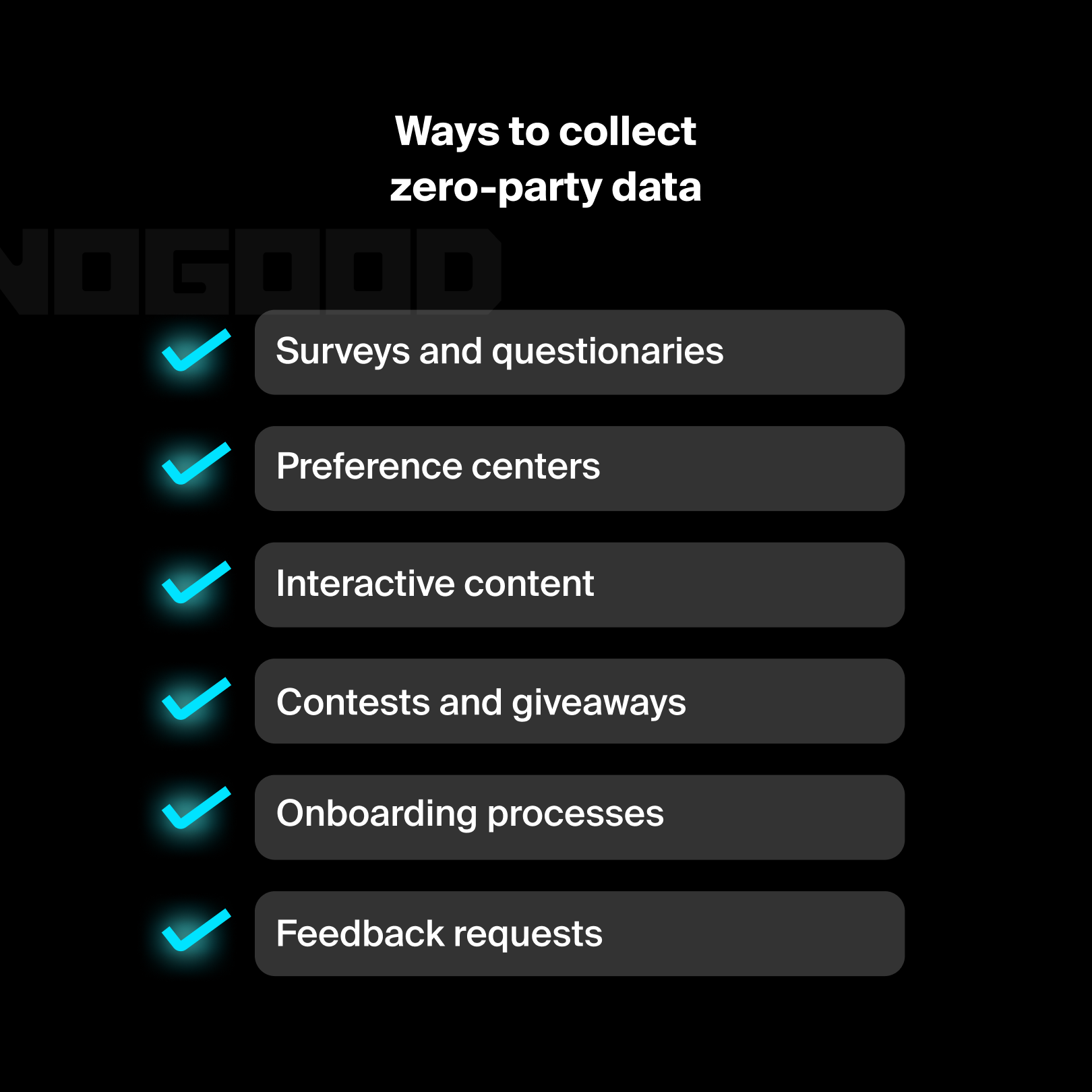
How to use zero-party data for email personalization
Zero-party data is a goldmine for creating highly personalized email campaigns. Here’s how to effectively leverage zero-party data to enhance your email personalization efforts:
1. Segment Your Audience
Segmentation is the foundation of personalized email marketing. Using zero-party data, you can create highly specific audience segments based on various criteria such as preferences, interests, and behaviors.
2. Personalized Content and Recommendations
Zero-party data allows you to deliver content and product recommendations that resonate with individual customers.
- Dynamic content: Use dynamic content blocks in your emails to show different content to different segments based on their preferences. For example, if a customer has shown interest in a specific product category, highlight those products in your email.
- Product recommendations: Leverage zero-party data to suggest products that align with a customer’s expressed interests. Personalized recommendations can significantly increase the likelihood of conversion.
- Relevant offers: Tailor promotions and discounts based on customer preferences and purchase intentions. Personalized offers are more likely to drive engagement and sales.
3. Customized Email Journeys
Creating customized email journeys based on zero-party data ensures that each customer receives relevant and timely communications throughout their relationship with your brand.
- Welcome series: Develop a personalized welcome email series that introduces new subscribers to your brand and highlights products or content that match their interests.
- Behavioral triggers: Set up automated email triggers based on specific actions or behaviors, such as cart abandonment, product browsing, or purchase anniversaries. Tailor the content of these emails to the individual’s preferences.
- Re-engagement campaigns: Use zero-party data to identify inactive subscribers and send personalized re-engagement emails that reignite their interest with relevant content or exclusive offers.
5. Personalized Subject Lines and Sender Names
The subject line and sender name are critical elements that influence whether an email gets opened. Personalize these elements using zero-party data to increase open rates.
- Personalized subject lines: Incorporate the recipient’s name, interests, or previous interactions into your subject lines. For example, “John, don’t miss out on our new arrivals in electronics!”
- Customized sender names: Use a sender name that resonates with the recipient, such as a specific customer service representative or a name associated with their favorite product category.
Best practices for leveraging zero-party data
Leveraging zero-party data effectively requires a strategic approach to ensure that the data collected is both valuable and actionable. First and foremost, always prioritize transparency and trust. Clearly communicate to customers why you are collecting their data and how it will enhance their experience.
Simplify the process of data sharing by using concise and user-friendly forms, surveys, or preference centers. It’s crucial to ask only for information that you will genuinely use, avoiding any unnecessary or intrusive questions. Once you have the data, integrate it seamlessly into your marketing platforms to create highly personalized and relevant communications. Regularly update and validate your data to maintain its accuracy and relevance. Additionally, continuously monitor and analyze the performance of your personalized campaigns to refine and optimize your strategies.
Here are some do’s and don’ts when it comes to collecting and leveraging zero-party data:
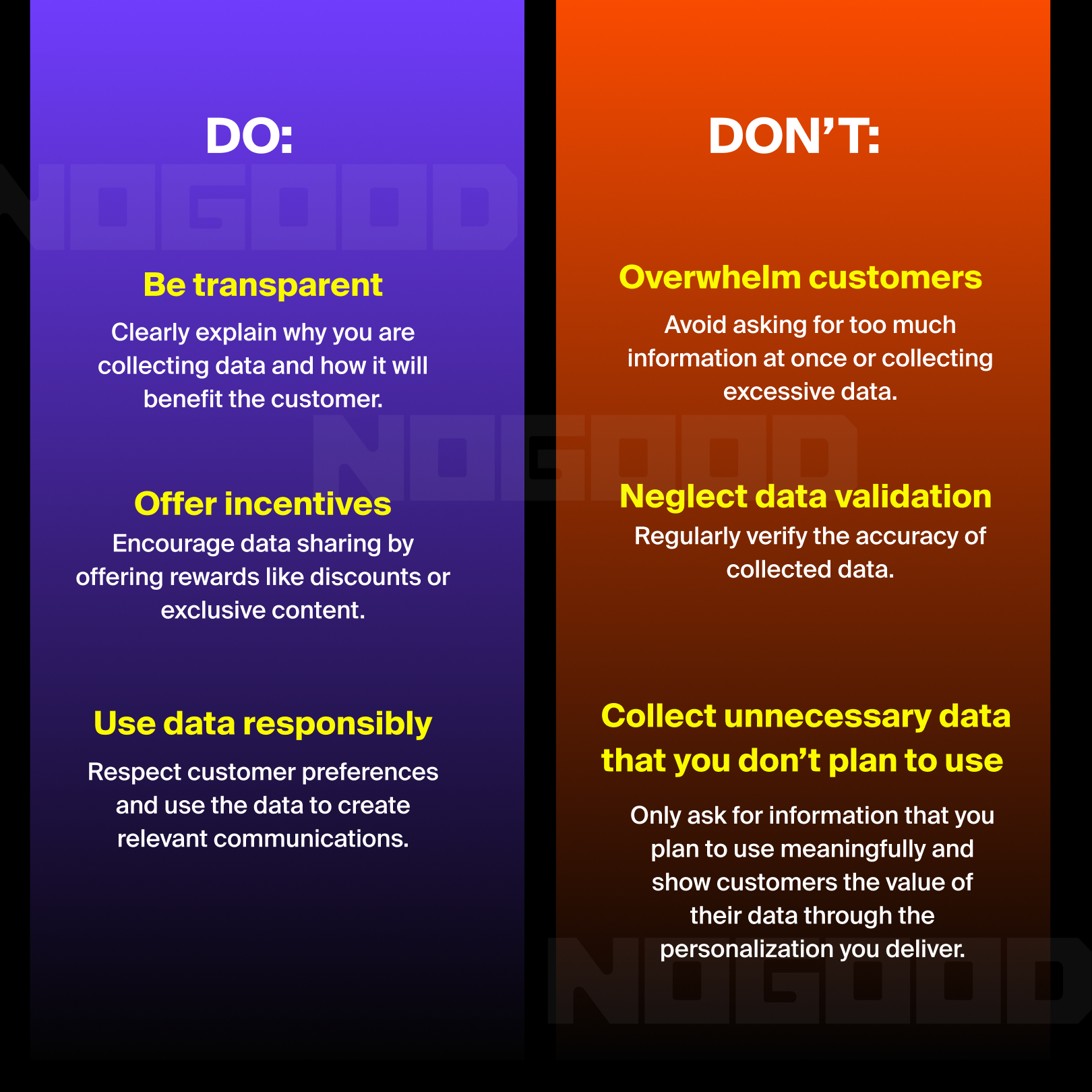
By following these do’s and don’ts, you can effectively use zero-party data to enhance your marketing efforts, build trust, and provide value to your customers.





